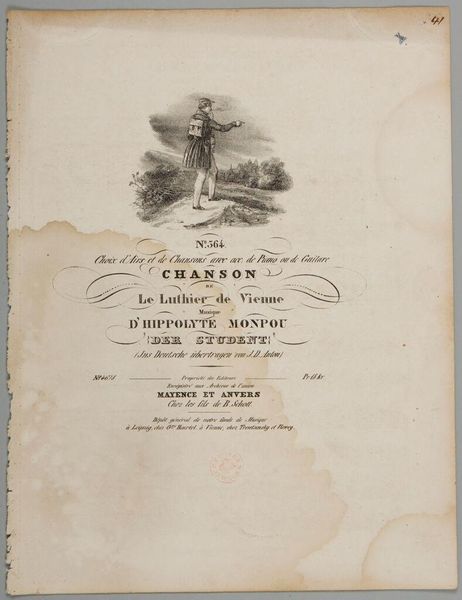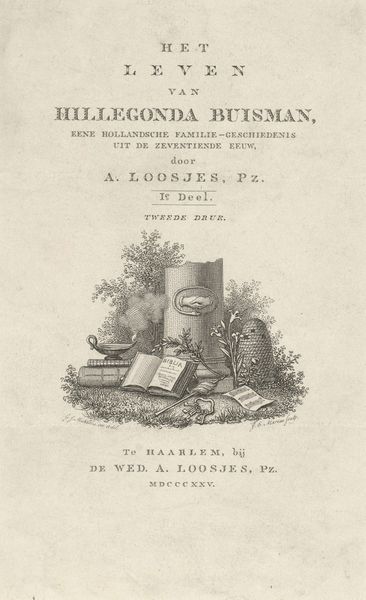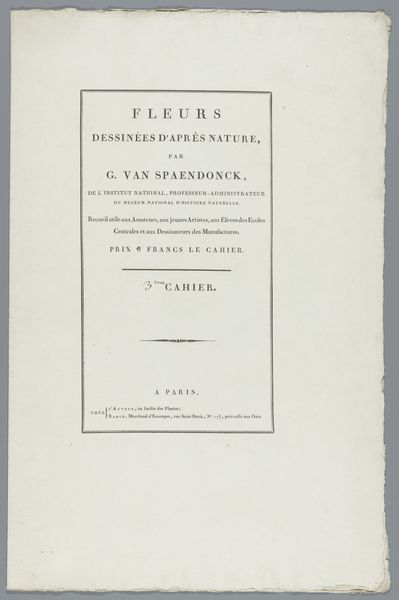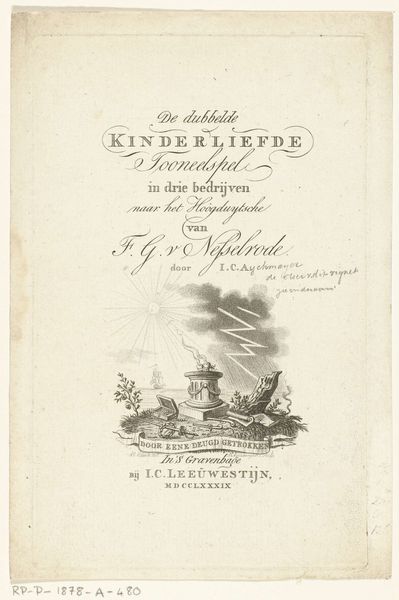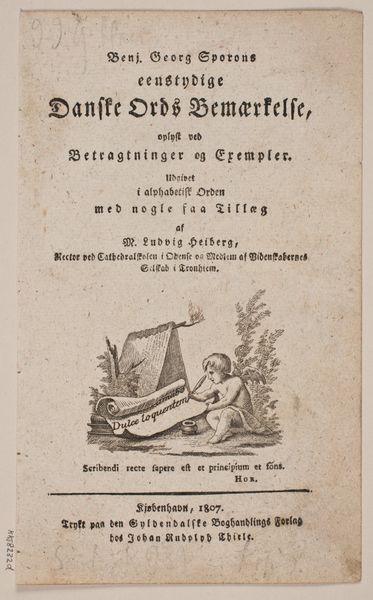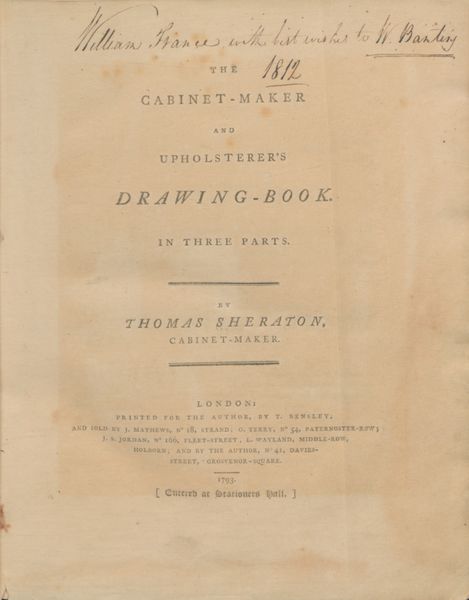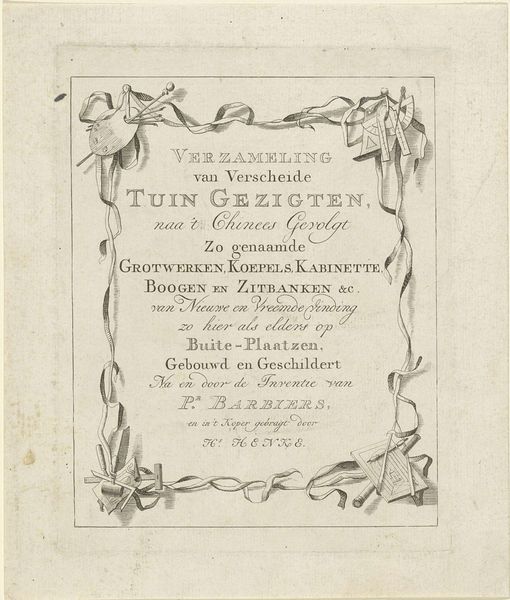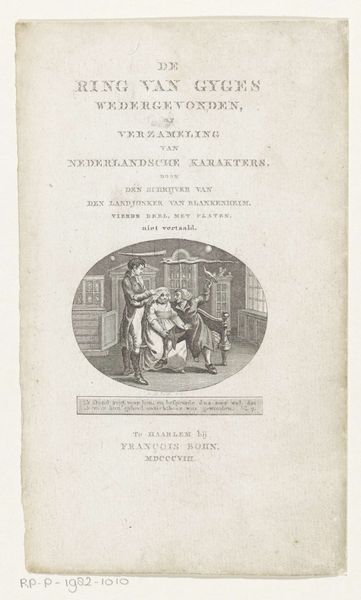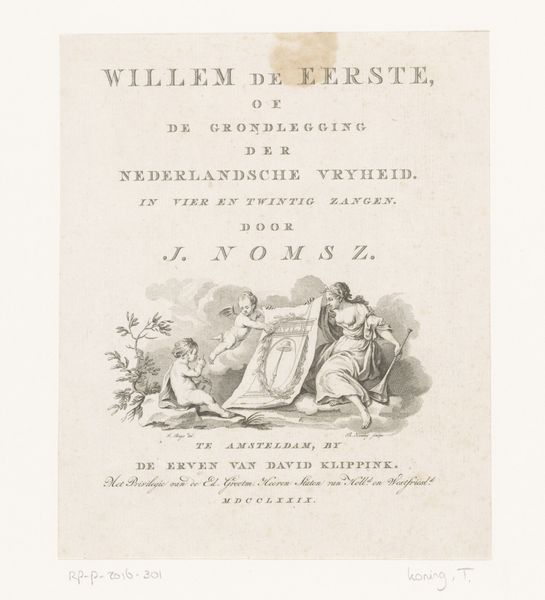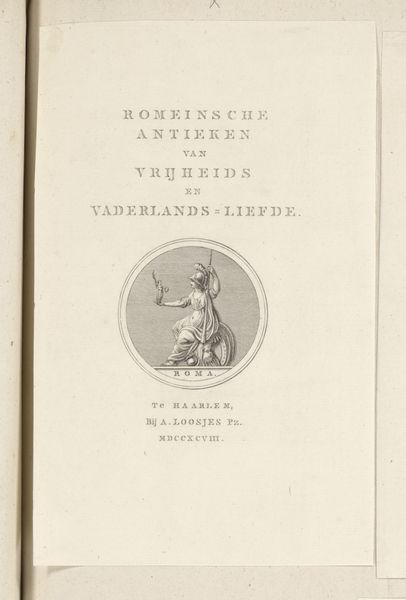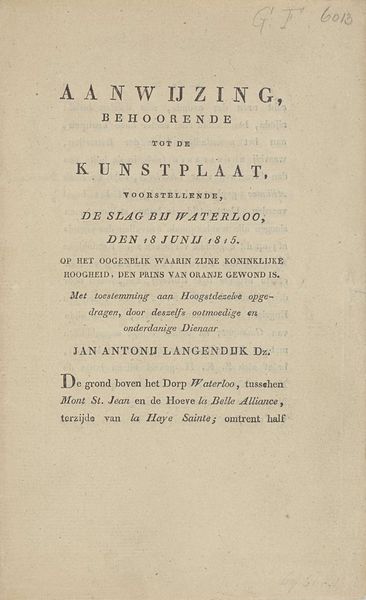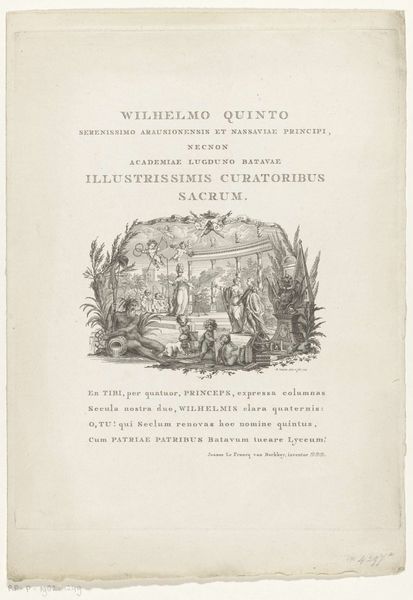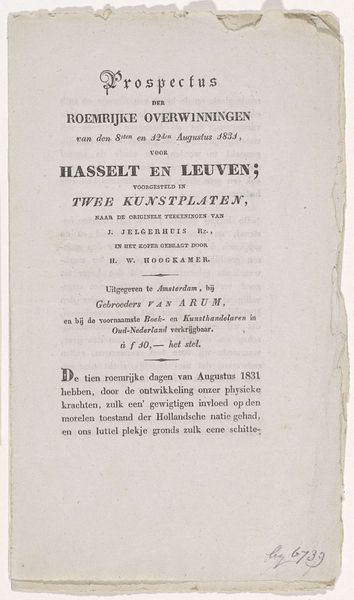
Brandend altaar met één van de eerste gedrukte boeken en twee wapenschilden 1824
0:00
0:00
philippusvelijn
Rijksmuseum
print, engraving
# print
#
romanticism
#
academic-art
#
engraving
Dimensions: height 224 mm, width 138 mm
Copyright: Rijks Museum: Open Domain
Curator: It has this melancholic sort of beauty, doesn't it? Editor: You're right; it has this rather haunting quality for what it's celebrating. This print, titled "Brandend altaar met één van de eerste gedrukte boeken en twee wapenschilden", dates back to 1824 and comes from the Rijksmuseum collection, crafted by Philippus Velijn. Curator: "Burning altar"...a touch dramatic, no? It's interesting they chose an altar consumed by flames. I almost get this feeling of... longing, mixed with respect, maybe? Is that odd? It feels very romantic, I suppose, if the tag holds any truth. Editor: No, I see what you mean. Consider the era: Romanticism blooming, yet firmly rooted in academic art. Velijn used engraving for this print. We're seeing a reproduction of an object celebrating book printing— a copy removed further and further from direct experience. Curator: Ah, layers! And there's this book slightly opened on the bottom left. Is that to suggest the unveiling of knowledge? Or is it being sacrificed to the flames? Oh, the mixed metaphors are exciting! Editor: Maybe. Or is this image a symbolic look at the materials? Paper turns to ash through fire. Printing created using intense pressure. These books become objects of symbolic and economic value. Consider who commissioned the original memorial that this is based on. What did printing afford them in Dutch society in the 1820s? Curator: You're so grounded! But I'm starting to imagine all of those printed words transforming back into energy, fueling that little flame... What an ode to the cycle of storytelling! Or an engraving in memoriam of the transition to an even newer medium: printmaking. Editor: Well, engravings are about reproduction but are still laborious objects in and of themselves. Look closely, can you see the human hand etched into the plate? And even today, we gather to remember those who invented print, sharing our impressions in a museum. Curator: I feel richer knowing I see more of its complexity. Editor: Agreed, It definitely reminds you that art always sits in the middle of cultural transitions and societal powers.
Comments
No comments
Be the first to comment and join the conversation on the ultimate creative platform.
